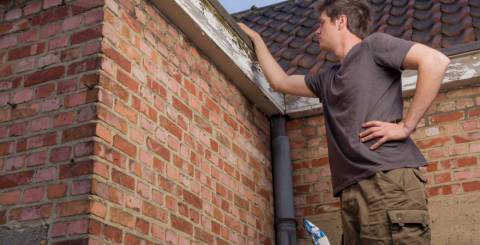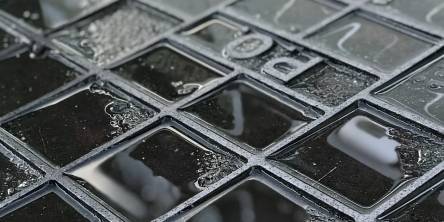Four Spring Cleaning and Inspection Tips for Your Roof

Spring, as you may have heard, is a time for renewal; but that means a renewal of everything—not just the fun stuff we associate with the season, like the end of snow (kind of) and flowers in bloom. Spring also means the renewal of outdoor chores—more specifically, roof maintenance and inspection. Oh yeah, I can feel your excited vibes all the way through the internet!
Roof upkeep clearly isn’t the most glamorous task, but if you’re a homeowner, it’s incredibly vital to prevent long-term structural damage to your house brought on by moisture permeation and material erosion. The National Roofing Contractors Association (NRCA) recommends that homeowners inspect and clean their roofs at least twice a year—once during the fall and spring.
Roof cleaning is an easy chore to neglect because of how involved it is, but doing so can severely hinder your home’s normal functions, like water drainage. During the winter, leaves, twigs, and seeds accumulate in your gutters. If you don’t regularly clear them, runoff water from snowmelt can overflow—or worse, pool atop your roof and slowly erode your roof’s protective materials. It isn’t just seasonal, though; in fact, clogged gutters become even more dangerous during the summer since accrued dried foliage becomes a fire hazard when the weather gets hotter.
To help simplify your spring cleaning routine for your roof, we’ve teamed up with an expert roofing company to outline the most important tasks. Here are four tips to keep in mind while maintaining your roof:
1. Check for Signs of Moisture Permeation
There are several ways to check for unwanted moisture deposits—inside and outside of your home. If you’re inspecting your roof’s exterior, look for fungus, algae, or rust, especially in spots where your roof is penetrated by fixtures like your chimney, skylights, or vents. Within your home, check for damp spots on your roof. If you see them, it’s almost certain moisture is seeping into your system.
2. Assess the Wear and Tear
A certain amount of depreciation is expected for any roof, regardless of its construction, since they’re constantly subjected to weathering effects, collision impacts, and abrasive contact from neighboring tree branches. Despite this reality, it’s crucial to understand how much wear and tear is reasonable based on how long you’ve had your roof and the quality of its construction materials. If you see loosening, cracked, porous, or discolored shingles, it’s likely the protective layers and granules of your roof are being eroded at too rapid of a rate, which may require immediate repair or replacement.
3. Don’t Flush Your Gutters Before You Clear Them
It’s tempting to try and streamline your gutter clearing by just rinsing out all those leaves and twigs with a garden hose, but doing so could end up compounding your drainage problems. Forcing all that foliage into a single downspout, unless it’s incredibly wide, can reduce your gutter’s draining capability and lead to more water permeating your home’s foundation, which over time, can severely diminish its structural integrity.
4. Trim the Tree Branches Crowding Your Roof
This is a frustrating to do since it’s not exactly roof maintenance, but doing so can greatly impact your roof’s longevity. Tree branches that are incredibly close to, or loom over, your roof can scratch its shingles and tear away protective granules. Over time, this constant abrasive contact can strip away your roof and greatly reduce its ability to safeguard you and your family from the elements.
Spring cleaning is often something we dread, especially when one of the checklist items requires climbing a ladder and inspecting your roof, but homeowners should welcome the opportunity to reinforce their roofing’s longevity and performance with a few, simple tasks. In the long run, your watchful eye may prevent you from having to replace or fully repair your system, which can be costly and even more of a time investment than your spring cleaning regiment.
Similar Articles
Have you ever harboured dreams of constructing your dream home filled with bespoke designs, carefully selected fittings and high-quality finishes? Have you ever fretted over the durability, aesthetics, and overall quality of your construction project? Are you constantly in search for the perfect balance between beauty and strength?
Cockroaches are one of the most common pests found in homes and businesses, and they are known for their resilience and ability to thrive in even the most unsanitary conditions. These pests can quickly infest kitchens, bathrooms, and other areas, spreading bacteria, allergens, and other harmful pathogens.
A well-maintained yard drainage system is key to preserving the beauty and health of any property. Poor drainage can lead to standing water, soil erosion, and even foundational damage to structures over time.
Keep your seaside home in top shape with these 4 expert tips! Learn about weatherproof materials, smart maintenance, and managing coastal challenges effectively.
Explore the future of roofing! Discover energy-efficient materials, smart systems, and sustainable designs reshaping modern home construction trends.
HVAC stands for heating, ventilation, and air conditioning. These all-in-one systems keep your home comfortable and improve air quality throughout a building. Often used in commercial buildings, HVAC units are increasingly used in residential buildings.
Safeguard your home after storms with timely roof repairs. Detect damage early, choose durable materials, and rely on a pro for lasting protection and peace of mind.
Learn how to balance a clean home and family life with these 6 practical tips to manage clutter, involve kids in chores, and set realistic expectations.
Homeowners are increasingly drawn to farmhouse-style architecture, which creates an inviting atmosphere in their homes that prioritizes comfort and coziness over aesthetics.









